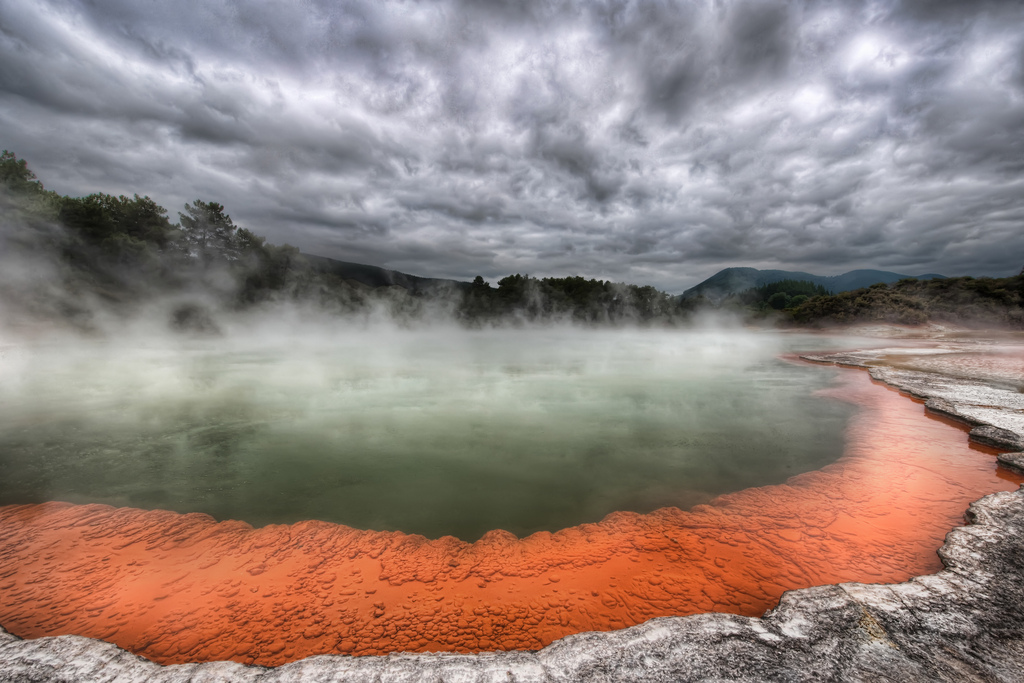Rotorua (NZ) sees collaboration on geothermal development
There is a local collaboration between different councils on further geothermal development in Rotorua, New Zealand, following a workshop on the Rotorua Geothermal Regional Plan.
There is an active collaboration between the “Bay of Plenty Regional Council and Rotorua District Council … to formulate how to allocate Rotorua’s geothermal resources…”, so local news.
“The two councils are … working with neighbouring regional council Environment Waikato – to look at the best possible gains to be made using the area’s geothermal energy. The workshop was also convened to brief Rotorua’s Elected Members on major issues to be addressed by the next Bay of Plenty Regional Policy Statement, and get an overview of future directions for geothermal use which is due for public release later this year.
The Regional Council manages geothermal allocation, protection and use for all of the Bay of Plenty’s 25 systems. Potential and actual development of these systems includes industrial and commercial direct use, tourism, electricity production and domestic use.
Rotorua District Chief Executive Peter Guerin said the workshop was a great opportunity to clear up some uncertainty about the directions being set at a regional level for geothermal use.
“The existing geothermal plan needs review now the Rotorua geothermal field has reached a state of equilibrium. It is now clear from the workshop the regional council has a clear strategy in place for preparing the next geothermal plan. They made it clear that determining the best mix of geothermal uses is the conversation the Rotorua community will have to have over the next 12 months.
“We need to ensure that this valuable resource is used for the best results. Sound geothermal management requires that we understand complex systems of how rock, water and heat interplay. The geothermal field is a key Rotorua issue. The funding the regional council has recently received to prepare a Bay of Plenty-wide energy strategy is a great positive step. This could also lead to a specific Rotorua energy strategy being prepared,” he said.
Regional Council chairman John Cronin said the Regional Council was working closely with Environment Waikato, and the combined group could secure access to the specialised expertise required for good system management across regional boundaries.
“For Rotorua, it is advantageous if the regions work together to create common regional policy. The Rotorua district straddles the regional boundary, so having the same geothermal management principles across both regions should make district implementation easier.”
“The proposed Regional Policy Statements mean sound, consistent management across the whole Taupo Volcanic Zone, taking account of the different qualities of each geothermal system. Surface features, such as geysers, springs, fumaroles and mudpools, are of international environmental significance, and huge economic significance,” Mr Cronin said.
“Rotorua city’s character and economic engine is founded on the Rotorua geothermal system. It is an international and national tourism drawcard. We know how important this system is.”
Rotorua has had a geothermal plan since 1999. It was one of the first plans developed by the Regional Council, because of an urgent need to restore the area’s iconic geyser system.
“We understand a lot more about what makes the geothermal system tick than we did in the mid 1990s. We believe there is still some capacity for use of more heat and fluid than is presently allocated – so we can contemplate a bit more fluid use and further heat use.
“We are determined that the system will never again be exploited to the detriment of our internationally renowned geyser field. Our management will require that the system stays in equilibrium. But we can use a bit more of this resource, and we can get more value out of it by using it more efficiently,” he said.
The Rotorua Geothermal Regional Plan was reviewed last year to assess how efficient and effective it had been. Regional Council Chief Executive Bill Bayfield told the workshop the Rotorua system did not have a boundless supply of heat and fluid. While there had been some recovery of the field, several features – Korotiatia, Waikorohihi, and Mahanga -had not recovered.
New plan provisions are needed to get more efficient allocation and use of the available heat and fluid, which are not fully allocated. The Regional Council needed to develop a non-regulatory management plan for the Rotorua geothermal system to support the regulatory provisions, in conjunction with iwi interests and Rotorua District Council.”
Source: Vozy.co.nz


















